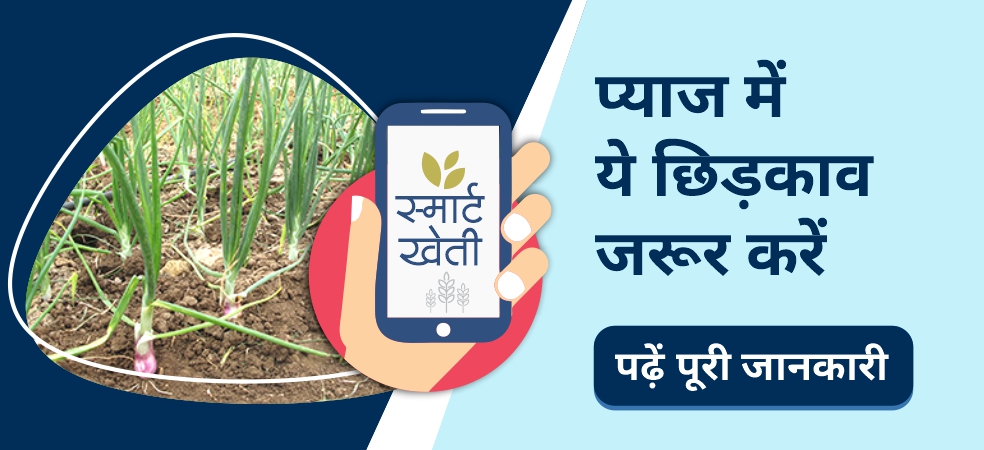-
To get a good crop of onion, it is very important to have knowledge of fertilizer and nutrition management. With the use of manure, fertilizers and agrochemicals in balanced quantities, we will be able to get disease and pest free crops with high quality.
-
If your onion crop is around 65 days after transplanting, then the following recommendations can be used –
-
Spray water soluble fertilizer 00:52:34 @ 1 kg + Abamectin 1.9% EC [Abasin] 150 ml + Kitazin 48% EC @ 400 ml per acre.
-
By the application of this spray, the crop can be protected from problems like mites and purple spot disease. Application of water-soluble fertilizer 00:52:34 helps in bulb formation.
ShareWith the sowing of the crop, connect your farm with the My Farm section of Gramophone app and keep on getting the exact advice and solutions related to smart agriculture throughout the crop cycle. Share this article with your friends with the share button below.










